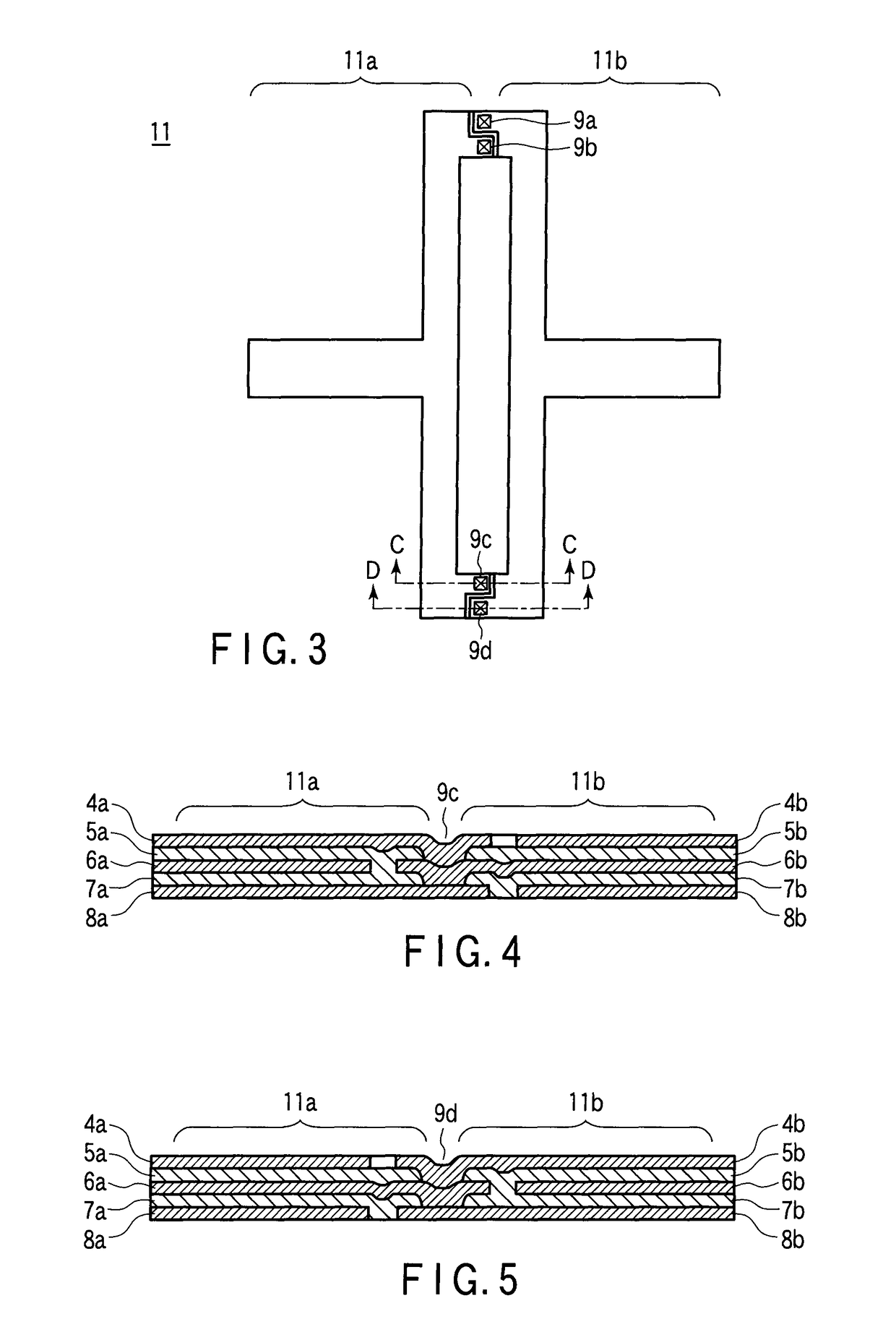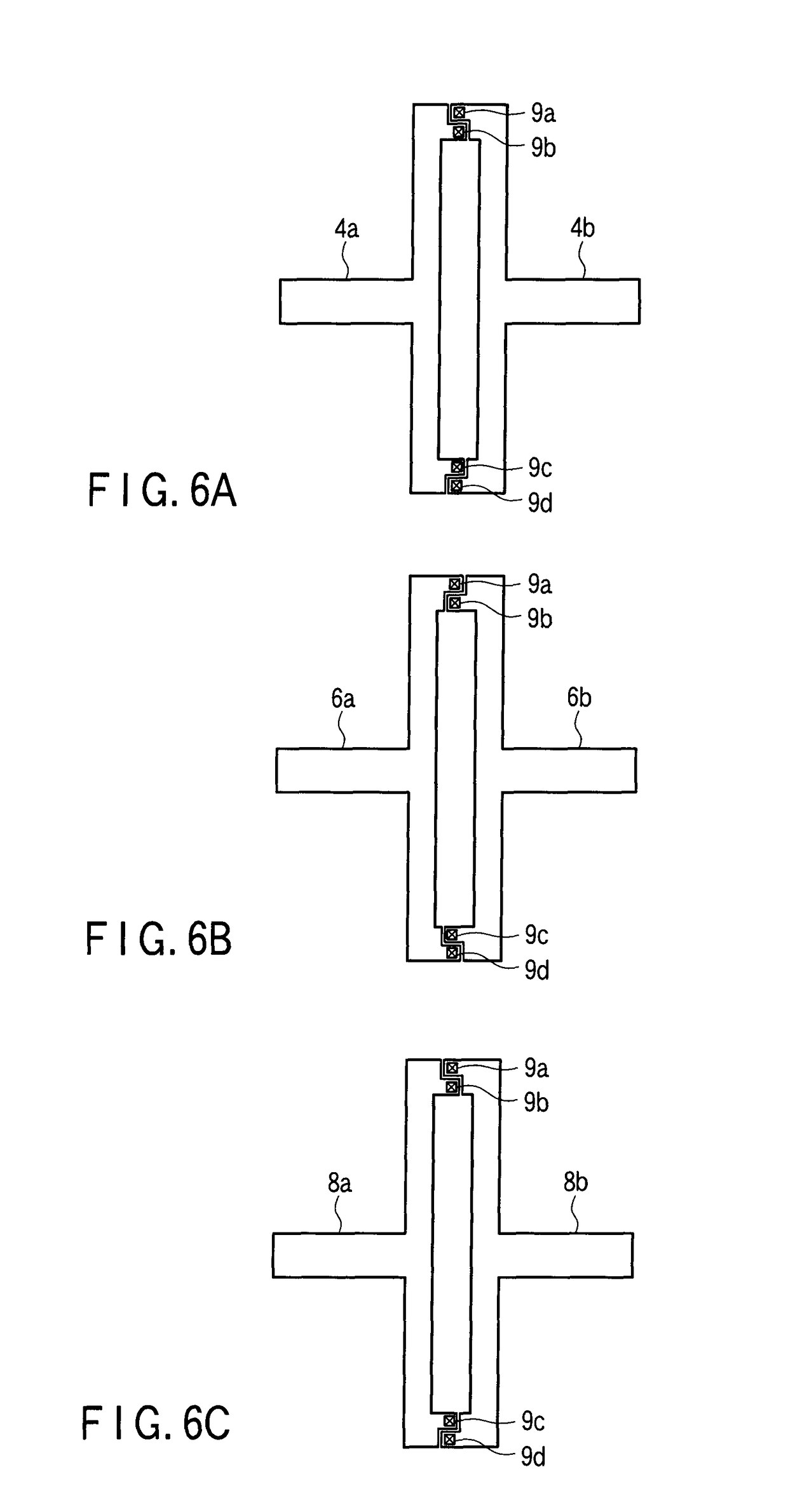Multiaxial acceleration sensor and angular velocity sensor
a multi-axial acceleration and sensor technology, applied in the direction of acceleration measurement using interia forces, turn-sensitive devices, instruments, etc., can solve the problems of high temperature dependence, detection value contains errors, and piezoelectric constant of pzt is highly dependent on temperatur
- Summary
- Abstract
- Description
- Claims
- Application Information
AI Technical Summary
Benefits of technology
Problems solved by technology
Method used
Image
Examples
first embodiment
[0077]FIG. 1 is a top view showing schematically the accelerometer of this embodiment and FIG. 2 is a sectional view taken along the line A-A of FIG. 1.
[0078]The accelerometer includes a disc-like base plate 1, a supporting ring-like or frame-like base 2 which is provided and fixed to the top face of the base plate 1, having a supporting surface and in which a hollow portion is formed internally, a disc-like weight 3 disposed in the central area of the base plate 1 within the ring-like base 2, and eight (first to fourth pairs of) piezoelectric bimorph detectors 11 to 18, each end of which is connected to the supporting surface of the base 2 while the other end is connected to the weight 3 so that each thereof is flexed. The piezoelectric bimorph detectors 11 to 18 of the first to fourth pairs have an identical size and shape as shown in FIG. 1.
[0079]In this specification, considering convenience for description, a home position O is set in the center of the top surface of the weight...
second embodiment
[0119]The basic principle of the angular rate sensor will be described prior to a detailed description of the angular rate sensor according to the second embodiment of the present invention.
[0120]The angular rate sensor of the present invention detects an angular rate using the Coriolis force acting on the weight 3. The basic principle of detecting the angular rate by detecting the Coriolis force will be described with reference to FIG. 21. Now assume that an oscillator 10 is placed at the home position of a XYZ three-dimensional coordinate system. This oscillator 10 corresponds to the weight 3 in the sensor of the present invention. To detect the angular rate ωx around the X-axis of this oscillator 10, a vibration Uz in the Z-axis direction is applied to this oscillator 10 as shown in FIG. 21 and then, a Coriolis force Fcy generated in the Y-axis direction is measured. The Coriolis force Fcy generated in the oscillator 10 is expressed in the following expression:
Fcy=2m·vz·ωx
where ...
third embodiment
[0155]In the third embodiment, an angular rate sensor capable of simultaneously detecting triaxial accelerations and biaxial angular velocities will be described in detail. The angular rate sensor of the third embodiment has the same structure as the angular rate sensor of the second embodiment shown in FIG. 22. The combination of the exciter and the detector and part of the detection circuit are partly modified.
[0156]In this angular rate sensor, the piezoelectric bimorph devices 31 to 34 are used as detection devices for detecting a displacement in the X-axis direction of the weight 3 and the piezoelectric bimorph devices 35 to 38 are used as detection devices for detecting a displacement in the Y-axis direction of the weight 3 as in the second embodiment. The piezoelectric bimorph devices 41 to 44 are used as detection devices for detecting a displacement in the Z-axis direction of the weight 3 and the piezoelectric bimorph devices 45 to 48 are used as excitation devices for vibra...
PUM
 Login to View More
Login to View More Abstract
Description
Claims
Application Information
 Login to View More
Login to View More - R&D
- Intellectual Property
- Life Sciences
- Materials
- Tech Scout
- Unparalleled Data Quality
- Higher Quality Content
- 60% Fewer Hallucinations
Browse by: Latest US Patents, China's latest patents, Technical Efficacy Thesaurus, Application Domain, Technology Topic, Popular Technical Reports.
© 2025 PatSnap. All rights reserved.Legal|Privacy policy|Modern Slavery Act Transparency Statement|Sitemap|About US| Contact US: help@patsnap.com



